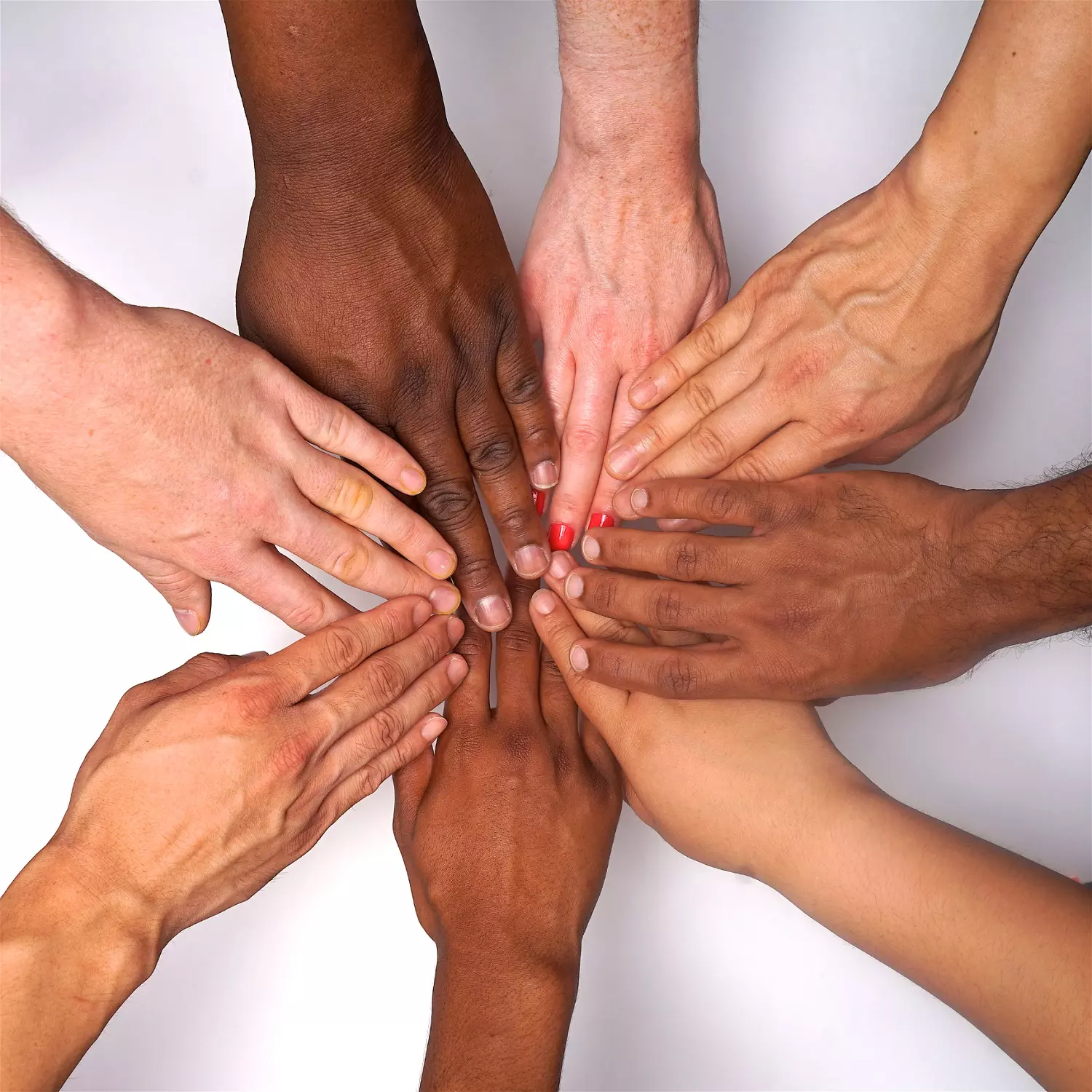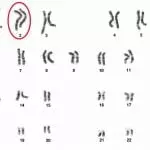[Originally published as Races: Where did They Come From?]
Mutations
Genesis teaches that God pronounced the first two created people very good when He created them at the very beginning. “Then God said, ‘Let us make man in our image, in our likeness.’ So God created man in His own image, in the image of God He created him; male and female He created them. God blessed them and said to them, ‘Be fruitful and increase in number; fill the earth and subdue it.’ God saw all that He had made, and it was very good” (Genesis 1:26–31 NIV).
Soon after, Adam and Eve openly violated God’s command not to eat of the forbidden fruit. As a result, sin entered the human race. God had to curse all of creation, and on that day Adam and Eve began the process of aging that always ends in death. An originally perfect created mankind began accumulating genetic mutations both in body cells and in germ cells.
Every generation has suffered from these mutations ever since. They degenerate each person’s body, sometimes causing death through cancer and other diseases. Mutations in the germ line over many generations have caused degeneration of the entire human race. This process has continued until today.
Geneticists have identified the mutations that cause over five thousand specific diseases in humans. Although a rare few one of these DNA copying errors accidentally brings a benefit in very limited surroundings, 99.99% either cause harm or make virtually undetectable changes. But these small changes accumulate. After hundreds of generations, every person today inherits thousands of mutations that Adam and Eve and their immediate descendants never had.
As in body cells, near-neutral mutations cause miniscule damage. After enough of these accumulate, they cause a genetic meltdown leading to extinction of the species. The text Principles of Medical Biochemistry [ii] under the subtitle “Mutations Are an Important Cause of Poor Health” states:
At least one new mutation can be expected to occur in each round of cell division, even in cells with unimpaired DNA repair and in the absence of external mutagens [mutation-causing agents]. As a result, every child is born with an estimated 100 to 200 new mutations that were not present in the parents. Most of these mutations change only one or a few base pairs … However, an estimated one or two new mutations are ‘mildly detrimental.’
This means they are not bad enough to cause a disease on their own, but they can impair physiological functions to some extent, and they can contribute to multifactorial diseases [when many causes contribute to illness]. Finally, about 1 per 50 infants is born with a diagnosable genetic condition that can be attributed to a single major mutation (p. 153).
The authors concluded that, as a result:
Children are, on average, a little sicker than their parents because they have new mutations on top of those inherited from the parents. This mutational load is kept in check by natural selection. In most traditional societies, almost half of all children used to die before they had a chance to reproduce. Investigators can only guess that those who died had, on average, more “mildly detrimental” mutations than those who survived (p. 153).
If macro-evolution is true, it is going the wrong way! It does not cause the ascent of life by adding new and useful biological coding instructions, but rather the descent of life by eroding what remains of the originally created biological codes. Should we call it “devolution” instead?
What do mutations have to do with “races?” Geneticists have studied DNA sequences in all kinds of different people groups. These studies reveal that each people group—which is most easily identified on a cultural level by sharing a specific language—shares a set of mutations. They must have inherited these “race” mutations from their ancestors after the Tower of Babel, since their ancestors freely interbred for the several hundred years between the Flood and the Tower.
Amazingly, however, all these mutations make up less than one percent of all human DNA in the human genome. This means that no matter how different from you someone looks, they are 99.9% genetically identical to you. For this reason, even evolutionary geneticists admit that the term “race” has virtually no biological backing. It comes from cultural and mostly language differences. Bottom line: all people have the same genetic basis to be considered fully human, while expressing interesting cultural and subtle physical variations.
Races: A DNA Bottleneck
According to the chronologies in Genesis 5 and 11, the Genesis Flood occurred about 1,656 years after Creation. From possibly millions of pre-Flood peoples, only three couples survived the Flood and had children afterward. This caused a severe DNA bottleneck. Genetic bottlenecks occur when circumstances suddenly squeeze populations down to small numbers. They concentrate mutations and thus accelerate diseases. This occurs, for example, when people or animals marry or mate with close relations. Children or offspring from these unions have a much higher chance of expressing inherited mutations in their bodies. The genetic bottleneck of the Flood accelerated the decay of the human genome from Adam and Eve’s once perfect genome.
Then, not long after the Tower of Babel, a major dispersion of humans occurred. Diverse ethnicities tied to languages. The Bible records 70–100 families left the Tower. Many of them have gone extinct. Those few original languages have diversified into over 7,000+ languages and dialects today. For example, English descended from the same basic language as German, while Welsh and Mandarin descended from fundamentally different original languages. Details from genetics and linguistics confirm Paul’s statement in Acts 17:26, “He has made from one blood every nation of men to dwell on all the face of the earth.”
Charles Darwin grouped these “nations” into “races,” then organized races into those he believed were less human—less evolved—than others. He was completely wrong. Genetically, people in each ethnicity or nation share equal standing with other men. Biblically, they share equal standing before God, “For all have sinned and fallen short of the glory of God,” according to Romans 3:23.
Physical Differences
As noted, all the differences between the human races are superficial, such as differences in skin, hair, and eye color. These traits account for less than 0.012% of human genetic differences, or 1 gene out of 12,000.[iii]
The two major traits that American society uses to label races are hair and skin color. About 350 years ago, primarily light-skinned people from Northern Europe and dark-skinned people from Africa immigrated to North America. However, when dark-skinned people marry those with light skin, their children usually show medium-tone skin. Adam and Eve must have had medium tone skin because they carried the necessary genetic variety for all humans to follow.
Sometime in history—probably at Babel—those with darker skin took their languages one direction, while those with lighter skin took theirs in another. Babel would have had a similar effect on many other traits. Different-looking peoples intermingled at Babel. But when God dispersed them from there, each family carried its language and traits away from the other families—at first. This way, many Asian groups carried their language and light skin and special eyes (with epicanthic folds). Middle-Easterners didn’t go as far, but kept their languages and medium-tone skin.
Of course, these groups almost never remained in total isolation. Genetic tests reveal that probably everybody contains a mixture of ethnic-identifying genetic markers. Most people in the world have a skin tone between the extremes, having brown skin and brown hair. Others have a mixture of traits.
Footnotes
[ii] Gerhard Meisenberg & William Simmons, Principles of Medical Biochemistry (New York: Mosby, 2006).
[iii] Susan Chavez Cameron and Susan Macias Wycoff, “The Destructive Nature of the Term ‘Race’: Growing Beyond a False Paradigm,” Journal of Counseling & Development, Volume 76, no. 3 (Summer 1998): 277–285. The article cites information from L. Luca Cavalli-Sforza, Paolo Menozzi, and Alberto Piazza, The History and Geography of Human Genes (Princeton, NJ: Princeton University Press, 1994): 279.







